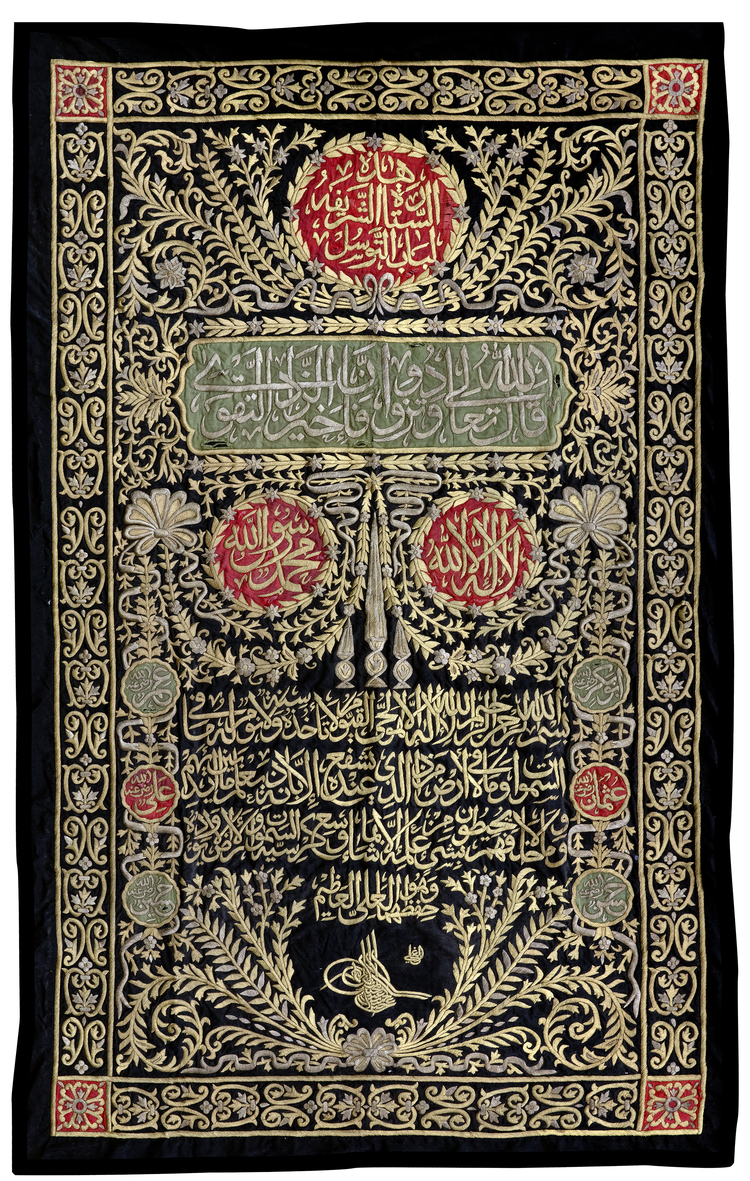AN OTTOMAN METAL THREAD EMBROIDERED CURTAIN WITH THE TUGHRA OF ABDUL HAMID II, TURKEY OR EGYPT, 1293-1327 AH/ 1876-1909 AD
Rectangular, heavily embroidered in silver and silver-gilt threads on a predominantly black cotton ground, consisting of an upper section with a rectangular panel bearing inscription on a green ground, above floral and laurel wreaths, and a small cartouche in red with inscription, the lower section with a floral swag topped with two inscription-filled cartouches. Four lines of inscriptions in elegant thuluth script, flanked on each side by three small inscription-filled cartouches, a Tughra below that surrounded by floral leafy sprays. All within a border with continuous repeat vegetal decorative motifs.
300 by 181 cm.
Catalogue note:
The inscriptions read as follows:
On the upper centre red cartouche:" This is the honorable Sitarah for the Bab al-Tawassul" in the Prophet’s Mosque
On the central green rectangular panel: V.197 from surah Al-Baqraa
Within the floral red cartouches: the Shahadah/Kalimaat al-Tawhid
The central inscriptions: four lines of Ayat al-Kursi /The throne, V.255 from surah al-Baqraa, flanked by six cartouches enclosing the names of al-Rashidun.
Below this is the Sultan's tughra, To the right of the tughra is the word Ghazi, the Sultan's honorific title.
This panel probably belongs to a set of textiles decorating the interior of the Shrine of the Prophet in Medina (the Rawdah or 'garden of paradise'). They were usually replaced when an Ottoman Sultan ascended the throne (cf. Stephen Vernoit, The Nasser D. Khalili Collection of Islamic Art: Occidentalism, London, 1997, pp. 27-33). When taken down, the panels would either have been sent back to the Sultan's palaces in Istanbul, used as tomb covers, or distributed among dignitaries and the nobility.


